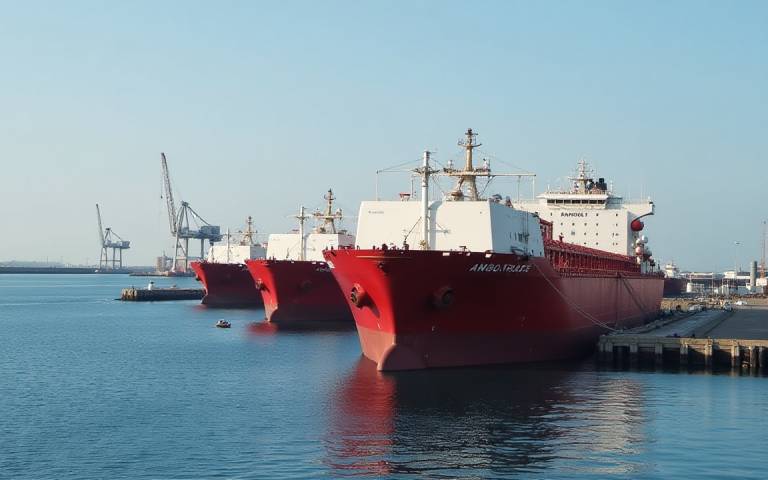Transit levels through the Strait of Hormuz have been closely tracked since June 13 and remain within normal ranges, according to Vortexa.
“Transits for the week ending June 22 were robust, 4% above the 2024 average and slightly higher than the weekly average for the month leading up to the attack,” Mary Melton, senior freight analyst at Vortexa said in a recent report.
June transits
Notably, the overall strength in transits during the third week of June is significant.
This is largely due to very robust crude/condensate exports from the Middle East Gulf in the first half of June (June 1-15), where term contracts and front-loading led to an almost 20% month-on-month increase in exports.
The decline in crude tanker transits noted was primarily due to a slowdown in export activity during the second half of the month, which is a frequent pattern observed in loadings from the Middle East Gulf (MEG), Melton said.
The tanker market’s primary concern had shifted to the vulnerability of the Strait of Hormuz since the Israel-Iran conflict began on June 13.
Hormuz handles 24% of all seaborne oil imports and 33% of crude oil.
Closing this vital strait, though unlikely due to its escalatory nature and impact on Iran’s oil exports to China, would be catastrophic.
On average daily transits through the Strait during the first 22 days of June were at a seasonal high, according to the shiptracking agency.
“Although there has been volatility day-to-day in terms of transit numbers since the attack, fluctuation in daily transit figures even in normal times is common, and we would caution against drawing conclusions from daily transit changes over a short period of time,” Melton said.
Vortexa’s data shows that operators are not avoiding transiting the Strait of Hormuz, but it has observed instances of vessels waiting outside the strait and appearing to only transit when necessary to make a laycan window.
Spot freight rates rise
Even considering the latest ceasefire between Iran and Israel, the tanker market still needs to account for the inherent risk in voyages through the Middle East Gulf via Hormuz, despite the low likelihood of a Hormuz closure.
Since June 13, spot freight rates have surged, with VLCC rates from the Middle East soaring over 100% to 16-month highs by June 23, up from year-to-date lows on June 12, according to Vortexa.
VLCC (very large crude carrier) rates have increased worldwide, with a 40% surge in US Gulf-origin VLCC rates over the same period.
Tradewinds reported War Risk Premiums rose Monday post-US strikes, despite static freight rates, signaling continued charterer cost increases due to ongoing tensions.
Though unlikely, the market could withstand a Hormuz crude transit loss for about 13 months due to the long supply chain, the agency said.
Melton said:
This goes towards explaining the relatively muted crude price reaction so far.
Rising Middle East freight costs could shift Asian purchases to the Atlantic Basin, increasing tonne-mile demand and VLCC rates due to higher demand and potential fleet tightness from risk concerns.
Long range tankers
Similar to VLCCs, LR (long range tankers) rates have seen a rapid increase from the sluggish levels experienced in the weeks preceding the conflict.
LR1 eastbound rates have increased 66% since the conflict began, LR2 eastbound have increased 85%, and LR2 westbound have increased 65%, Vortexa said.
Vortexa analysts have already observed an uptick in transatlantic diesel exports from the US Gulf to Europe, and an increase in Medium Range (MR) tanker rates on the route.
This trend is likely driven by supply fears in Northwest Europe and concerns about the unworkability of East-West middle distillate flows.
Middle distillates from the Wider Arabian Sea for Europe could increasingly be sourced from India’s West Coast volumes, or from Saudi Arabian exports via its Red Sea ports of Yanbu and Jizan.
“Naphtha exports from the MEG to Asia would be more difficult to replace, but LR voyages from the Med and Russia Baltics going East would likely increase,” Melton said.
Will freight rates rise further?
“We are hearing of a clause vessel operators are considering, which would enable them to withdraw from voyages at any time due to safety concerns, without being subject to arbitration,” Melton said.
Vessel operators can maintain high rates due to increased risk, while simultaneously minimising exposure to actual danger.
US President Donald Trump’s announcement of a ceasefire, which was reportedly agreed upon by Israel and Iran, could halt the rise of freight rates and ease concerns about the risk of Hormuz closure.
However, “it also became clear that both sides (Iran and Israel) had chosen not to target each other’s energy infrastructure, notwithstanding Iran’s nuclear facilities,” said David Morrison, senior market analyst at Trade Nation.
At the same time, it became apparent that Iran would not close off the Strait of Hormuz.
Although oil prices may decline more quickly, war risk premiums and freight rates are likely to decrease at a slower pace, according to Vortexa.
Due to regional instability, tanker operators continue to hold an advantage over charterers, demanding high premiums for cargo transport.
The post Analysis: Strait of Hormuz transit steady, but freight rates could keep rising appeared first on Invezz

